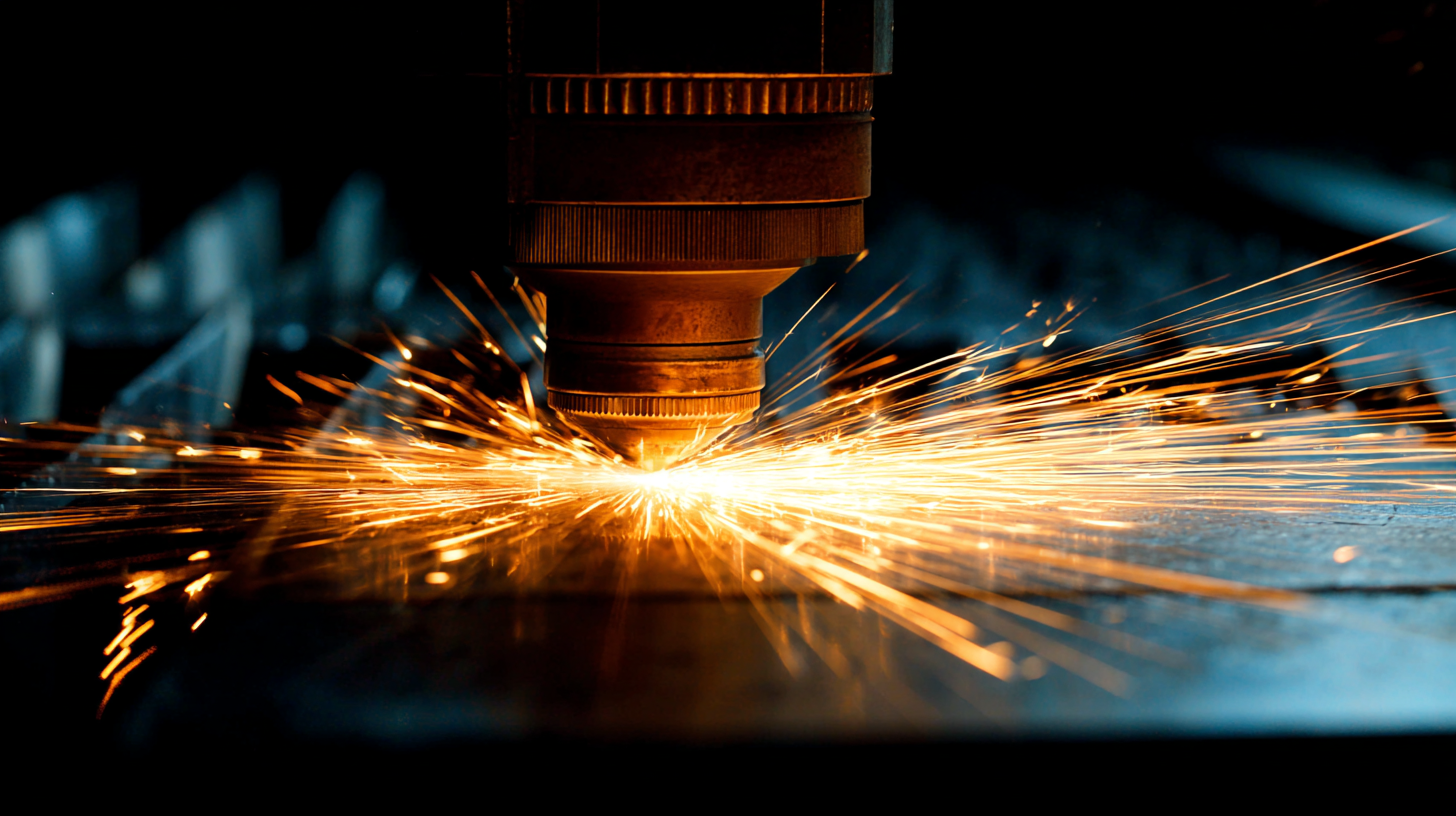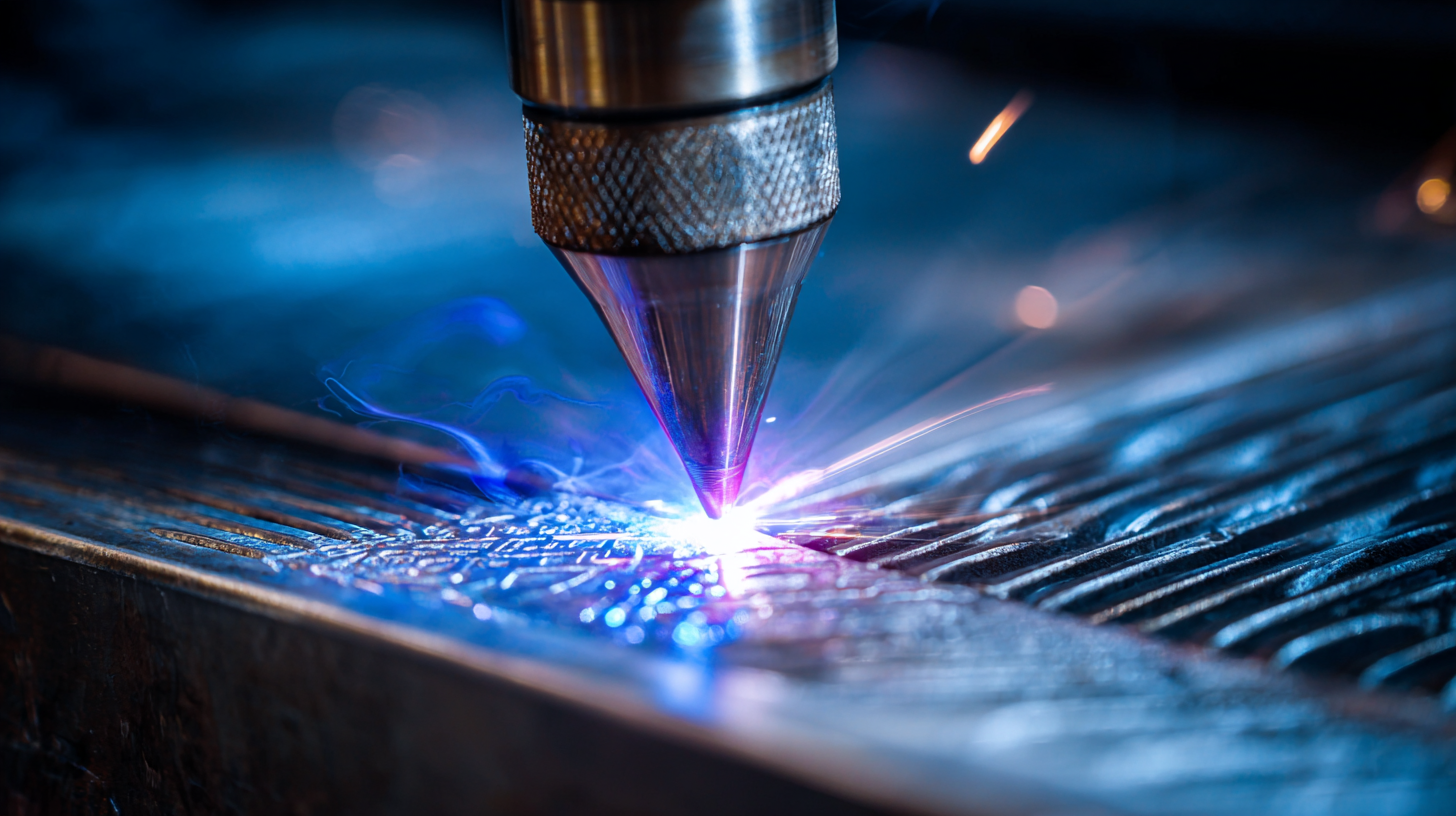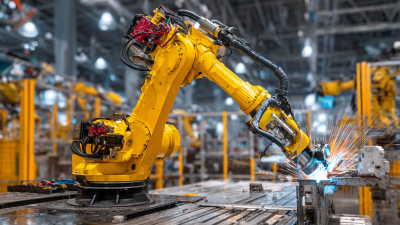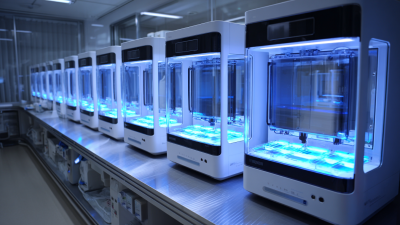Revolutionizing Fabrication: The Future of Seam Tracking Welding Technology Explained
In the rapidly evolving landscape of manufacturing, seam tracking welding technology is emerging as a transformative force, reshaping the way industries approach joining processes. As precision and efficiency become paramount, the integration of digital solutions into seam tracking welding is revolutionizing fabrication techniques, ensuring consistent quality and reducing operational costs. This fusion of advanced algorithms and machine learning with traditional welding practices not only enhances the accuracy of weld placements but also adapts to the complexities of different materials and joint configurations.

In this exploration of the future of seam tracking welding technology, we will delve into the innovative methodologies that are setting new standards in the industry, highlighting the potential benefits that digital transformation can bring to fabricators and manufacturers alike. By understanding these advancements, businesses can better position themselves to meet the demands of a competitive market while maintaining high standards of craftsmanship.
Understanding Seam Tracking Technology in Welding: Key Principles and Mechanisms
Seam tracking technology represents a significant advancement in the welding industry, allowing for precision and efficiency in the fabrication process. At its core, this technology utilizes sensors to detect the seam of the materials being welded, enabling the welding torch or robotic arm to adjust its position in real-time. This dynamic adjustment is crucial for maintaining a consistent weld bead, especially when working with materials that may not be perfectly aligned. By automating seam tracking, manufacturers can reduce human error and improve the overall quality of their welds.
Tips for effective seam tracking:
1. Ensure proper calibration of the sensors before starting a welding job. This helps in minimizing inaccuracies that might arise due to environmental factors or material inconsistencies. Additionally, operators should regularly maintain and clean the tracking equipment to prevent any obstructions that could disrupt its functionality.
Moreover, understanding the different types of seam tracking systems—such as contact, non-contact, and video-based systems—can empower welders to choose the best technology for their specific applications. Each system comes with its set of advantages, and selecting the right one can optimize productivity and enhance the quality of fabricated parts.
Current Trends in Seam Tracking Welding: Market Growth and Technological Advancements
The welding industry is undergoing significant transformation, driven by advancements in seam tracking technology and increased market demand. According to industry reports, the global arc welding equipment market is expected to grow from USD 14.56 billion in 2024 to USD 22.49 billion by 2033, reflecting a robust growth trajectory due to innovations in robotic and automated systems. The development of seam tracking welding technologies is particularly pivotal, as these systems enhance precision and efficiency, making them indispensable in complex manufacturing environments.
As the market expands, businesses are increasingly investing in robotic welding systems to address labor shortages and improve production rates. The robotic welding market alone is projected to witness substantial growth, with the automotive sector driving much of this demand. Additionally, the welding consumables market is also set to grow significantly, with expectations to increase from USD 20.3 billion in 2025 to USD 34.9 billion, fueled by a CAGR of 5.6%.
Tips: When considering the adoption of new welding technologies, focus on training personnel to maximize the benefits of automation. Investing in robust seam tracking systems can lead to a noticeable reduction in material waste and improved weld quality. Emphasizing continuous improvement through feedback and data analysis can further enhance operational efficiency in welding processes.

Benefits of Automated Seam Tracking: Cost Efficiency and Enhanced Precision in Fabrication
The automation of seam tracking welding technology is ushering in a new era of precision and cost efficiency in fabrication. As manufacturers face increasing assembly complexities, automated seam tracking offers significant benefits. By utilizing advanced vision inspection systems, companies can produce precise, reliable, and repeatable weld seams, which are crucial for maintaining high-quality standards in manufacturing. This enhancement not only boosts product quality but also improves throughput, allowing businesses to meet growing consumer demands effectively.
Tips for Implementing Automated Seam Tracking:
- Invest in Quality Technology: Prioritize high-resolution cameras and sensors that can accurately detect seams, ensuring consistent performance in varying conditions.
- Train Your Workforce: Provide comprehensive training for employees to operate and maintain automated systems, maximizing the technology's potential and minimizing downtime.
- Regularly Update Software: Keep seam tracking software updated to leverage advancements in algorithms and machine learning, enhancing both precision and efficiency in welding operations.
The robotic welding market is projected to experience substantial growth, with a market size expected to reach $20.16 billion by 2032. As companies increasingly recognize the advantages of automated seam tracking, they will likely invest more in these advanced technologies. This strategic shift not only promises enhanced operational efficiency but also positions manufacturers to thrive in a competitive landscape.
Real-world Applications of Seam Tracking Welding in Various Industries: Case Studies and Success Stories
Seam tracking welding technology is making significant strides across various industries, showcasing its versatility and efficiency through multiple real-world applications. In the automotive sector, manufacturers are leveraging this technology to enhance the precision of welds on complex car frames. For instance, a prominent car manufacturer implemented seam tracking systems in their assembly lines, resulting in a remarkable reduction in production time and an increase in the quality of welded joints. This not only streamlined their operations but also reduced material wastage, thereby improving overall cost-effectiveness.

In the aerospace industry, seam tracking welding is particularly critical due to the stringent safety and performance standards required. A leading aerospace company adopted advanced seam tracking technology for its aircraft fuselage assembly. By ensuring accurate weld placement, the company achieved significant improvements in structural integrity and performance reliability. Case studies reveal that this approach not only minimized the risk of defects but also accelerated the certification process for new aircraft models, allowing them to bring innovations to market faster than ever before.
Future Innovations in Seam Tracking Technologies: Predictions and Industry Impacts by 2030
As the welding industry strides toward increased automation and precision, seam tracking technologies are poised for significant innovations by 2030. According to a report from Allied Market Research, the global market for seam tracking technology is expected to reach $1.5 billion, growing at a CAGR of 10.2%. This growth is driven by the rising demand for high-quality welding processes in sectors such as automotive, aerospace, and shipbuilding, where precision is paramount.
Future advancements will likely integrate artificial intelligence and machine learning, allowing for real-time adjustments to welding parameters and enhancing the accuracy of seam tracking. A study published by the International Journal of Advanced Manufacturing Technology predicts that the implementation of AI-driven seam tracking will reduce welding defects by up to 40%, leading to substantial cost savings and improved product quality. Additionally, as these technologies evolve, companies adopting these innovations can expect a significant competitive edge, thanks to enhanced efficiency and reduced downtime in welding operations.
Future Innovations in Seam Tracking Technologies: Market Growth Predictions by 2030
This chart illustrates the predicted market growth of seam tracking welding technologies over the next decade, highlighting advancements in automation and precision that are expected to drive the industry.
Related Posts
-

Exploring the Future of Manufacturing: How Servo Robot Seam Tracking Revolutionizes Precision Welding
-

The Future of Healthcare Automation How Dispensing Robots Are Revolutionizing Patient Care
-

Exploring the Future of Robotic Process Automation for Business Efficiency
-

Unlocking the Future of Automation with Digital Robotic Process Techniques
-

Exploring the Future of Robot Servo Technology at the 2025 China Import and Export Fair
-

Exploring the Future of Robotic Vision: Innovations That Transform Industries






